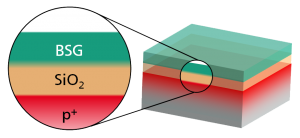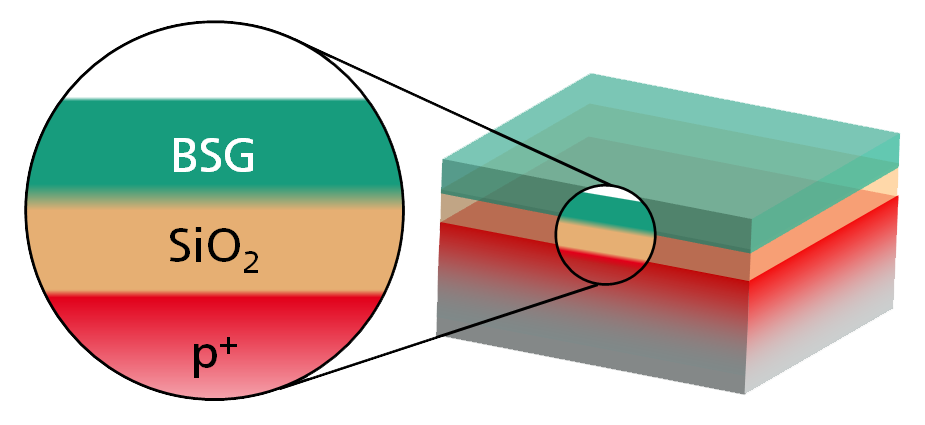To further increase the energy conversion efficiency of n-type silicon solar cells with boron-doped emitter, charge carrier recombination within the emitter region has to be decreased. For this, not only the charge carrier recombination in the photoactive (non-metallized) area is relevant but also the one at the metal contacts. The requirement on the doping profile for achieving low charge carrier recombination is very different within these two regions.
One solution to form differently doped emitter regions is the usage of the so-called selective emitter approach. Therefore, a higher doping underneath the metal contacts is realized by driving in additional boron atoms from the borosilicate glass (BSG) layer – that forms during boron tribromide (BBr3) diffusion – via laser diffusion. For a successful implementation of laser diffusion, the BSG needs to provide sufficient boron after BBr3 diffusion.
A new concept of attaching a second deposition step at the end of a BBr3 diffusion was introduced recently by researchers, where second deposition describes an active nitrogen flow through the BBr3 bubbler. This approach provides a two times higher boron dose in the BSG layer compared to the BBr3 diffusion without second deposition which facilitates the formation of laser-doped selective emitters. During BBr3 diffusion a stack layer consisting of BSG and an intermediate silicon dioxide (SiO2) is grown on the silicon surface.
The second deposition step reduces the thickness of the SiO2 layer and increases the BSG layer thickness. After laser doping, the charge carrier concentration is higher for the BBr3 diffusion process with second deposition resulting in stronger local doping. This approach is very promising to reduce charge carrier recombination in n-type silicon solar cells allowing for a boost in energy conversion efficiency of such devices.
Kindly contributed by the Authors.

















